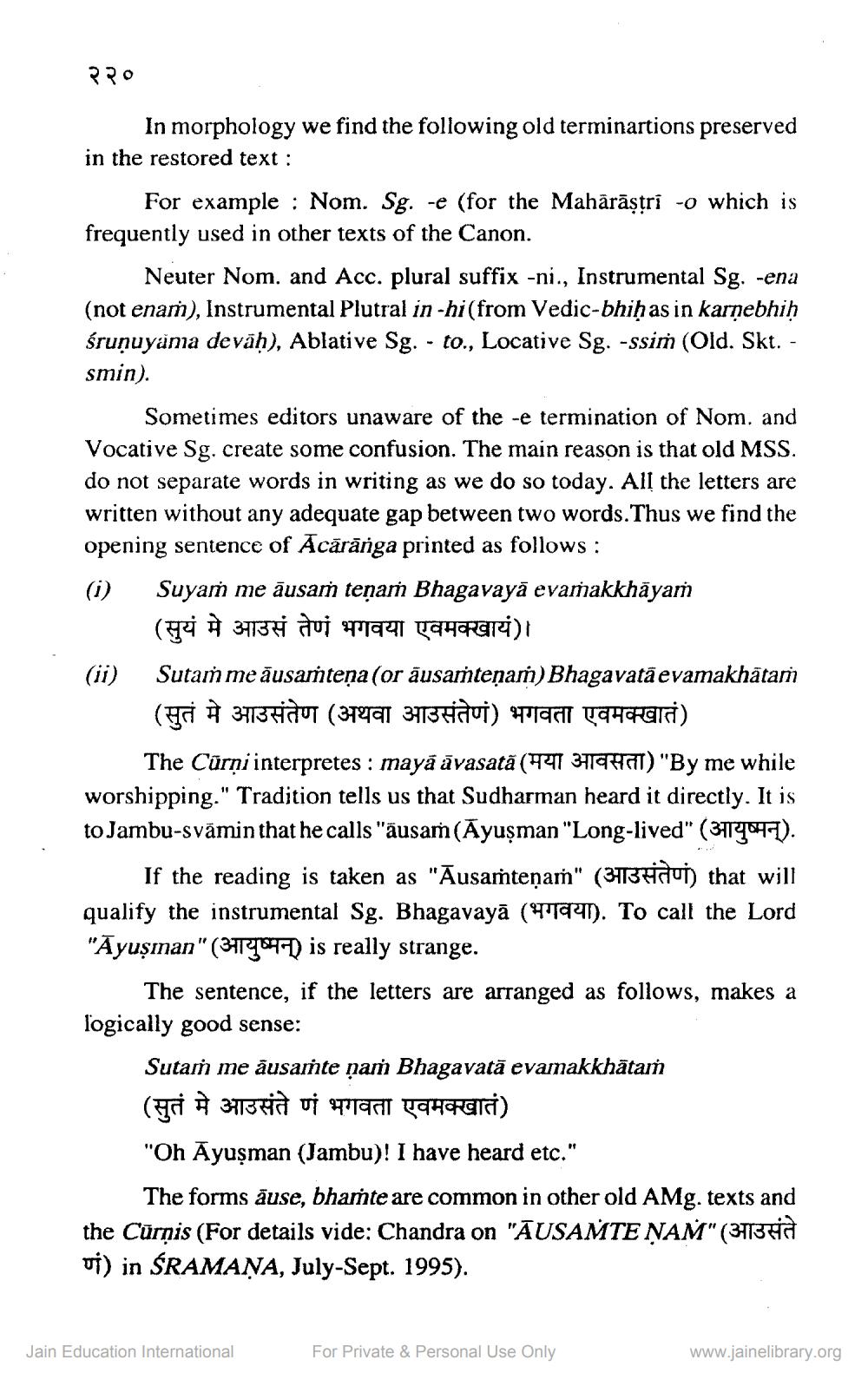________________
२२०
In morphology we find the following old terminartions preserved in the restored text:
For example: Nom. Sg. -e (for the Mahārāṣṭri -o which is frequently used in other texts of the Canon.
Neuter Nom. and Acc. plural suffix -ni., Instrumental Sg. -ena (not enam), Instrumental Plutral in -hi (from Vedic-bhiḥ as in karṇebhiḥ śruṇuyama devāḥ), Ablative Sg. to., Locative Sg. -ssim (Old. Skt. - smin).
Sometimes editors unaware of the -e termination of Nom. and Vocative Sg. create some confusion. The main reason is that old MSS. do not separate words in writing as we do so today. All the letters are written without any adequate gap between two words. Thus we find the opening sentence of Acaranga printed as follows:
(i) Suyaṁ me ausaṁ teṇam Bhagavayā evaṁakkhāyaṁ
(सुयं मे आउ तेणं भगवया एवमक्खायं ) ।
(ii) Sutam me ausamteṇa (or äusamteṇaṁ) Bhagavataevamakhātam (सुतं मे आउसंतेण (अथवा आउसंतेणं) भगवता एवमक्खातं )
The Curni interpretes : mayā āvasată (4 1) "By me while worshipping." Tradition tells us that Sudharman heard it directly. It is to Jambu-svamin that he calls "ausam (Ayuṣman "Long-lived" (34).
If the reading is taken as "Āusaṁteṇam" (313+dui) that will qualify the instrumental Sg. Bhagavayā (4). To call the Lord "Ayuşman" (3) is really strange.
The sentence, if the letters are arranged as follows, makes a logically good sense:
Sutaṁ me ausaṁte ṇaṁ Bhagavatā evamakkhātaṁ
(सुतं मे आउसंते णं भगवता एवमक्खातं )
"Oh Ayuşman (Jambu)! I have heard etc."
The forms äuse, bhamte are common in other old AMg. texts and the Curnis (For details vide: Chandra on "ĀUSAMTE ṆAṀ" (3πзHÀ vi) in ŚRAMAŅA, July-Sept. 1995).
Jain Education International
For Private & Personal Use Only
www.jainelibrary.org




